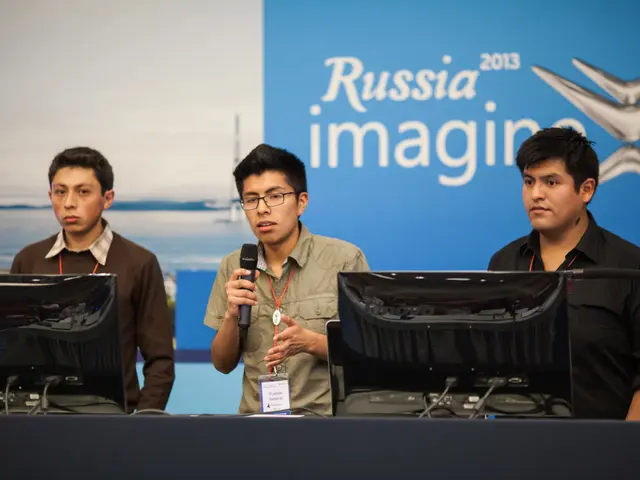Energy reductions in California stirring worries
In the dynamic landscape of energy policy and development, several significant events have unfolded across the Western United States. Here's a roundup of some of the recent developments:
California, a state at the forefront of renewable energy, curtailed 3,400 GWh of solar power last year, indicating a potential need for increased demand via electrification or transmission line expansion. This trend could pave the way for a more integrated and efficient energy system in the Golden State.
Meanwhile, in Colorado, Governor Jared Polis signed legislation aimed at bolstering railroad safety, while in Oregon, lawmakers have passed legislation requiring data centers and large industrial energy users to pay for their electricity use and costs. These measures underscore the growing importance of energy efficiency and sustainability in these states.
In the realm of solar and storage projects, rPlus Energies secured over $500 million in tax equity financing for the Green River solar-plus-storage project. This investment is a testament to the growing confidence in renewable energy projects and their potential to power the future.
However, not all developments are smooth sailing. The proposed Power Pathway transmission project by Xcel Energy is facing opposition from Eastern Colorado residents due to concerns about fire hazard and wildlife migration. This highlights the need for careful consideration and community engagement in large-scale energy projects.
In the realm of battery storage, the company sonnen is making strides in California, installing battery storage systems and operating virtual power plants (VPPs) that connect thousands of home batteries into a large-scale digital storage system. This innovation is crucial in addressing the increasing restrictions of solar and wind power on the grid.
Elsewhere, in Wyoming, a lawmaker has introduced legislation requiring developers to pay for wildlife habitat conservation or restoration. This could set a precedent for other states to prioritise environmental sustainability alongside energy development.
In Montana, the Public Service Commission's president criticised NorthWestern Energy for implementing an unapproved rate hike using an obscure state statute. Regulators were reportedly powerless to block the hike, sparking concerns about fairness and transparency in energy pricing.
Metallic balloons have caused power outages in southern California, colliding with utility lines and affecting approximately 4,600 customers. This incident underscores the need for caution and responsible use of such objects near power infrastructure.
On the coal front, the U.S. Interior Department approved Signal Peak Energy's proposed Bull Mountain coal mine expansion in Montana, a decision that could potentially impact the state's carbon emissions and energy mix.
In Nevada, consumer advocates are pushing back against NV Energy's proposal for peak demand-based rates, citing affordability concerns for working families. This debate underscores the delicate balance between energy innovation and affordability.
Lastly, the Port of Los Angeles is moving forward with efforts to transition to a zero-emissions truck fleet, a significant step towards reducing emissions in one of the busiest ports in the world.
These developments paint a vibrant picture of the energy landscape in the Western United States, with a mix of challenges and opportunities. As the region continues to shape its energy future, these trends will undoubtedly continue to evolve.
Read also:
- Duty on cotton imported into India remains unchanged, as U.S. tariffs escalate to their most severe levels yet
- Steak 'n Shake CEO's supposed poor leadership criticism sparks retaliation from Cracker Barrel, accusing him of self-interest
- Hydrogen Energy: Sustainable Innovation or Resource Exploitation?
- Dim outlook for a major energy corporation







